Additive Manufacturing Help Is at Hand from 3D Printing Service Provider
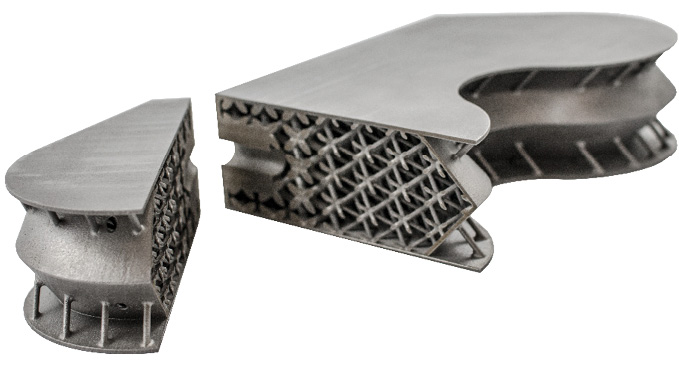
Engineers at Materialise and Atos reduced material usage by 66% in this aerospace insert with topology optimization and lattice structure design. Image courtesy of Materialise.
Latest News
May 1, 2017
Rapid prototyping & manufacturing (RP&M) technologies, also known as solid freeform fabrication, desktop manufacturing, direct digital manufacturing, layered manufacturing or additive manufacturing (AM) are used to physically create a design via a number of different processes that add and bond materials in layers to form manufactured objects.
RP&M technologies allow for manufacturing objects with geometric intricacy, reducing construction of many complex objects to a manageable, straightforward, relatively fast process. Moreover, in some RP&M techniques, different materials can be jointly utilized following a controlled methodology at any location in a piece.
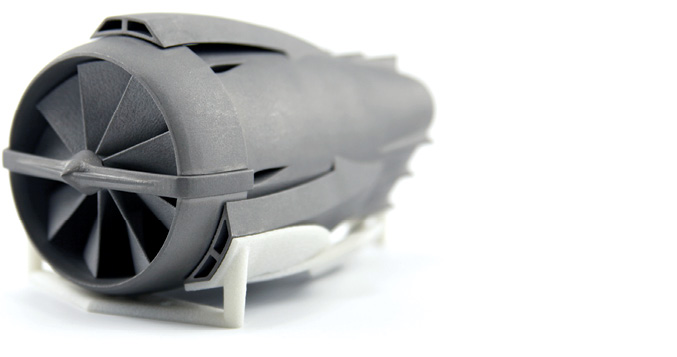 Stratasys Direct Manufacturing serves customers in a number of industries, including the energy sector, which is turning to its stereolithography, laser sintering, direct metal laser sintering and CNC machining services for applications such as rotors and stators. Image courtesy of Stratasys Direct Manufacturing.
Stratasys Direct Manufacturing serves customers in a number of industries, including the energy sector, which is turning to its stereolithography, laser sintering, direct metal laser sintering and CNC machining services for applications such as rotors and stators. Image courtesy of Stratasys Direct Manufacturing.Remember though, that RP&M describes a variety of processes, aiming at quickly creating three-dimensional physical parts from virtual 3D computer models using automated machines. The parts are directly manufactured from a 3D CAD model and can match it very closely (within the precision limits of the chosen process). It is therefore different from traditional fabrication, only possible using computers and software both to generate the 3D CAD model data, as well as to control the mechanical systems of the machines that build the parts.
Though RP&M processes are different, the basic operating principles are very similar. The basic AM process includes the following eight steps:
- Construct the CAD model.
- Convert the CAD model to STL format.
- Check and fix STL file.
- Generate support structures if needed.
- Slice the STL file to form layers.
- Produce physical model.
- Remove support structures.
- Post-process the physical model.
However, notwithstanding that one of the advantages of RP&M is related to design without limitation, AM often represents an unexplored opportunity due to the difficulty in using all the characteristics of (AM) technologies. The main causes are:
- sometimes engineers and designers work with conventional technologies limitations in mind;
- there is often a generation gap, and it is easier for young designers to embrace RP&M oriented design; and
- design rules for rapid prototyping and AM are specific for each process and sometimes for each material, requiring, for example, an in-depth knowledge of the minimum wall thickness and/or the minimal diameter of an internal channel of the final design.
3D Printing Service Revenues Are Adding Up
 Revenues for AM products and services in the past six years, in millions of U.S. dollars, according to Oerlikon, a global technology group.
Revenues for AM products and services in the past six years, in millions of U.S. dollars, according to Oerlikon, a global technology group.AM Services and Materials: Where The Real Money Is
AM is constantly evolving and adjusting itself to new developments, whereas AM actors and companies in all emerging sectors are facing—or taking advantage of—sector consolidations and corporate mergers. The evolution of the technology and the extended number of applications are leading to a steady growth of materials availability; in parallel, service centers are growing worldwide—providing clients with multiple technologies and processes available in the same location and for diverse additively manufactured parts.
In fact, AM services income grew in the past six years reaching $2.8 billion, according to a December 2016 fact sheet published by Oerlikon. The support available to design engineers represents a further opportunity for business development—both for providers and end users.
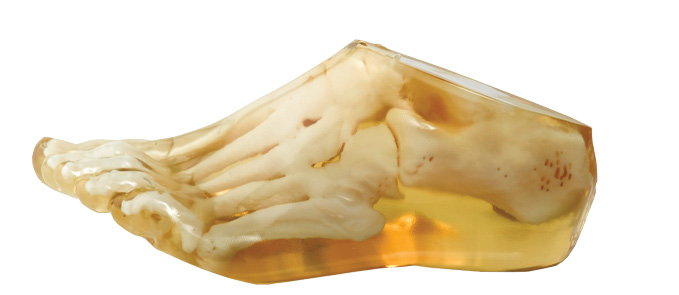 PolyJet technology is capable of creating multiple materials and colors in a single print. Image courtesy of Stratasys.
PolyJet technology is capable of creating multiple materials and colors in a single print. Image courtesy of Stratasys.Rapid Prototyping Services Worldwide
As you take advantage of rapid prototyping, numerous service platforms offer design engineers the support required to translate CAD files into 3D manufactured objects, as well as provide the required services to fill the existing knowledge gap. Digital Engineering contacted some service providers that offered an overview of the market situation, trends and technical services to support digital designers.
As presented by Scott McGowan, vice president of marketing at Stratasys Direct Manufacturing, the company’s platform “provides a very consultative sales process,” whereby account managers and project engineers engage with customers about the project, its application and use, which leads to “decisions about the technology and materials best suited and tailored for the customer’s business needs.” Such a consultative approach has allowed Stratasys Direct Manufacturing to “advance the technology’s capabilities one application at a time.”
Being aware of the knowledge gap among digital engineers when it comes to rapid prototyping and AM, McGowan says “a professional services team provides advanced consultative services to further support the integration of 3D printing tailored to unique business needs and hosts training events at both company’s facilities and customer sites.” Training encompasses a range of topics including technologies, designing for AM, applications optimized for 3D printing and AM of production components.
Lack of knowledge is also seen by Stratasys Direct Manufacturing as a challenge for wider adoption of RP&M because “3D printing solves unique problems that are more difficult in a traditional manufacturing environment,” McGowan says, and it is the “best series of technologies for projects with requirements that include lower quantities, complex designs, speed to market or a bridge to tooling.”
In terms of customers’ categories, top industries for Stratasys Direct Manufacturing include: aerospace (commercial and military); medical (devices and equipment); industrial equipment, and energy and consumer products. Its typical customer titles include mechanical and design engineers, as well as C-level and upper-level managers, who have witnessed the effect that 3D printing is having or recognize its potential. They are passing down the desire to assess and integrate this technology into their product development and production portfolios. Customers are located throughout the United States, Canada and Brazil.
Stratasys Direct Manufacturing sees “a lot of growth opportunities in additive metals and production components,” McGowan says. “As companies learn more about what has been done with success, they are more apt to consider ways to adapt their operations to incorporate 3D printing [and foresee] less focus on new technologies and more on materials and properties that offer new applications for existing technologies.”
 Engineers at Materialise and Atos reduced material usage by 66% in this aerospace insert with topology optimization and lattice structure design. Image courtesy of Materialise.
Engineers at Materialise and Atos reduced material usage by 66% in this aerospace insert with topology optimization and lattice structure design. Image courtesy of Materialise.According to Pieter Vos, marketing director of Materialise Manufacturing, the company’s in-house design and engineering team supports clients by “answering to the design questions that arise at each stage of 3D printing adoption and of the product development cycle.” Specifically, the company’s 3DP Academy workshops are half-day or full-day events aimed at “increasing the internal knowledge on 3D printing within a company” on various subjects from the strengths and weaknesses of different technologies and materials, to specific customer cases. Last year the “Materialise Metal Tour” organized a series of 3DP Academy sessions across Europe, exclusively focusing on Metal 3D Printing gaining a widespread interest.
For Materialise, a key role is played by “co-creation,” which bridges the existing knowledge gap while merging customers’ experience and knowledge of their market with the company’s expertise in AM. For example, the design and engineering team worked together with Atos to re-engineer an aerospace part in titanium and made it just one-third of the initial weight.
Materialise’s customer base consists primarily of designers and process engineers in production units. As a business division, Materialise Manufacturing focuses on Europe, while i.materialise is a business-to-consumer platform that addresses individual designers around the globe.
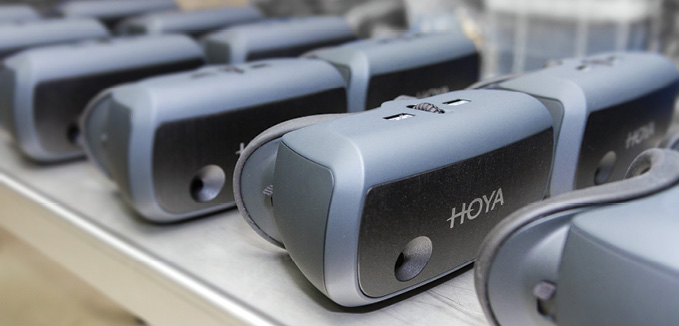 Additive manufacturing provided the design flexibility needed for HOYA’s Vision Simulator, which enables the end-user to experience the vision they will have with their new HOYA lenses. Image courtesy of Materialise.
Additive manufacturing provided the design flexibility needed for HOYA’s Vision Simulator, which enables the end-user to experience the vision they will have with their new HOYA lenses. Image courtesy of Materialise.While over the years, the possibilities for 3D printing have significantly increased with innovations in material, processes and applications, “the industry is now in transition and the next achievement will be to enhance series production and larger-volume end-use production,” says Vos. Moreover, he adds that another challenge for AM service providers is to “highlight the product development benefits that 3D printing is already bringing to businesses—from lighter parts to shorter lead times to more nimble product development cycles—and thereby encourage wider adoption of 3D printing,” as well as “changing the design mindset, once a business has recognized the advantages of 3D printing.”
Complexity is not a cost driver for AM and parts can be designed in ways that would not have been possible with conventional manufacturing, but “designing or redesigning for 3D printing requires a new design approach,” Vos says, as happened when Materialise partnered with HOYA, resulting in a virtual reality simulator that allowed customers to experience lenses before purchasing them.
Proto Labs has seen double-digit revenue growth since entering 3D printing in 2014 when the company acquired Fineline Prototyping, followed by another acquisition in 2015 of German-based Alphaform. “What’s pretty unique about our business is that we really are a technology-agnostic provider, meaning our production equipment is quite broad as it seeks to satisfy the particular project need of each and every customer,” says Greg Thompson, global product manager-3D printing at Proto Labs. “In fact, Proto Labs offers stereolithography (SL), selective laser sintering (SLS) and direct metal laser sintering (DMLS) services while PolyJet will soon be introduced as well as the new Multi Jet Fusion technology of HP.”
Furthermore, CNC machining and injection molding services—both of which have been fully digitized—are also offered to “provide parts really fast (for example, cutting an aluminium tool and having upwards of 10,000 parts made in 15 days or less),” Thompson says, adding that all three services will continue to expand in the coming years.
In-house applications engineers at Proto Labs support customers—many of whom are design engineers—in optimizing parts and products for 3D printing, while also offering free webinars on metal 3D printing technology and end-use production for both metal and plastic parts.
Proto Labs customers include Fortune 100 multinationals, startups and entrepreneurs: “Although headquartered in Minnesota, Proto Labs is a global company with eight manufacturing facilities and tens of thousands of customers worldwide, coming from a multitude of industries, especially from key sectors as medical devices, consumer products, electronics, automotive, and aerospace,” Thompson says.
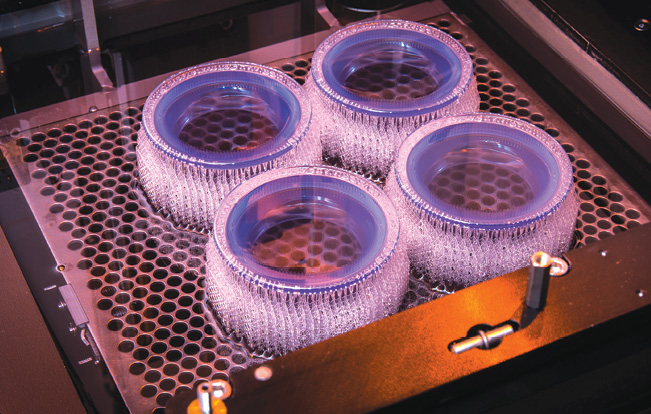 Proto Labs offers stereolithography (pictured), selective laser sintering and direct metal laser sintering as well as support services in its new 77,000 sq.-ft. facility in Cary, NC. Image courtesy of Proto Labs.
Proto Labs offers stereolithography (pictured), selective laser sintering and direct metal laser sintering as well as support services in its new 77,000 sq.-ft. facility in Cary, NC. Image courtesy of Proto Labs.Challenges for a wider AM adoption, in addition to the existing knowledge gap, are related to “limited production quantities in the hundreds,” Thompson says. “If, or when, that increases to larger volumes, there would be added value to the technology.”
Dr. Tracy Albers, president and chief technology officer at rp+m, says the company “offers a complete customer service, as to understand design, applications, technologies and materials, which best suit their needs as a whole, and at the same providing the needed knowledge and translating design and ideas in manufactured prototypes.”
Based 95% in the United States and Canada, the company’s clients mainly work in the aerospace, defense, automotive and heavy industry sectors, with additional possible future applications in the medical sector.
One of the most relevant challenges in terms of rapid prototyping and manufacturing adoption is related to the “lack of material availability, in comparison with what is available for traditional subtractive manufacturing,” Albers says, as well as the need to “help customers to totally understand the full range of opportunities represented by AM technologies.” It is also for these reasons that Albers remains “conservatively bullish” for the adoption of RP&M technologies on a wider scale considering the “need to extend the knowledge of which AM applications could be more effective than subtractive ones,” while aerospace and defense will continue to investigate opportunities to further incorporate design freedom and functionality of parts that are currently subtractively manufactured.
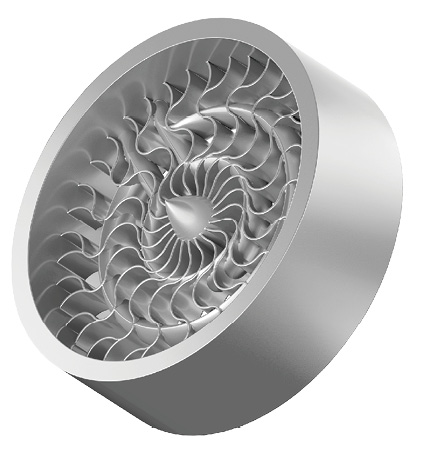 Direct metal laser sintering enables the creation of complex internal channels. Image courtesy of Proto Labs.
Direct metal laser sintering enables the creation of complex internal channels. Image courtesy of Proto Labs.Anyshape, led by CEO Roger Cocle, “supports its customers by redesigning prototypes to ease the fabricability of the part, to decrease printing cost, to ensure proper anchoring of the part and to allow subsequent positioning during machining operation, while at the same time varying printing parameters to improve surface roughness or the material properties, to increase productivity, or to minimize the risk of crash” and for some complex parts “topology optimization or simulation to improve the printability are made internally and results or options are proposed to customers and partners.”
Specifically concerning rapid prototyping, the company’s multi-jet printing (MJP) systems can rapidly manufacture parts with high accuracy in high-performing plastic. MJP is the process designed to produce prototypes, mock-ups, patterns for silicon molds as well as end-use parts, while ABS-like materials offer robustness, endurance, stability, thermal resistance, sealing features and biocompatibility.
Anyshape clients are “among the main large companies in our geographical area in the sectors of aerospace, tooling and transportation and their design departments,” Cocle says, as well as smaller ones “for which the design/redesign for AM printability is made without delaying their projects.”
Also, for Anyshape the challenges for a wider adoption of RP&M are related to the limitation in the range of available materials, though Cocle says the company does not hesitate to qualify a new material when required by a client. “Price and timing are the key drivers,” he says. “AM must be a fast track process, including the machining and post-treatment or finishing treatment, which nowadays can represent a challenge for those clients who require a ready-to-use part.”
In the next five years, the market will continue to grow at a high rate as presently observed, but the ambition of Anyshape will be to “develop the AM benefits as much as possible for technological industrial companies across Europe.”
For more info:
Giorgio Magistrelli, L.L.M, is a management consultant specifically focused on the regulatory and business aspects of Additive Manufacturing in mature and emerging markets. Contact him about this article via [email protected].
Subscribe to our FREE magazine, FREE email newsletters or both!
Latest News






